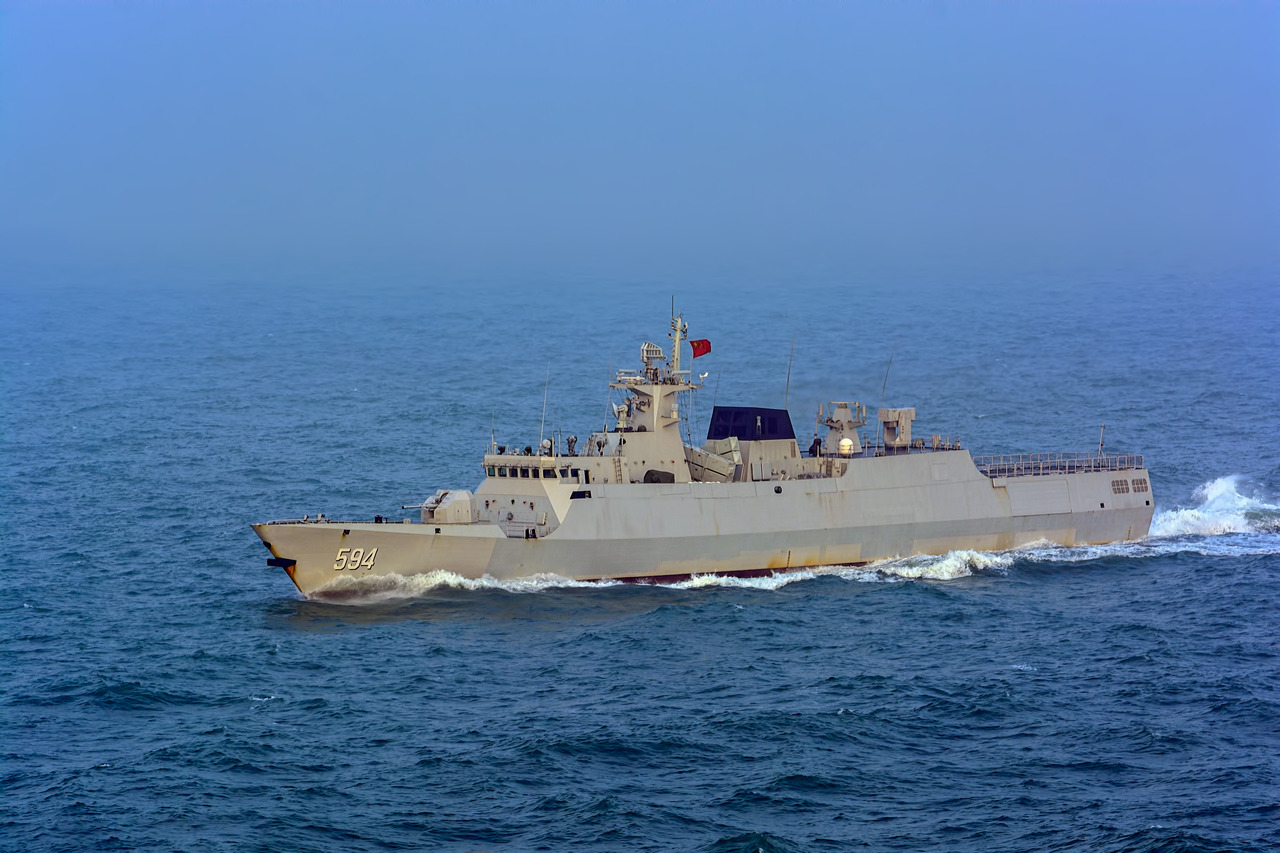
China Rattles Australia and New Zealand With Live-Fire Naval Drills
This latest show of force is part of Beijing’s ongoing plan to build a blue-water navy with global reach.
As if the People’s Republic of China’s (PRC) acts of aggression against Taiwan and the Philippines weren’t bad enough, now China is engaging in disturbing saber-rattling against another key U.S. ally in the Indo-Pacific region, Australia.
Australia is in China’s sights
The details come to us from CNN reporter Nectar Gan in an article republished on MSN titled “Live-fire drills by ‘extremely capable’ Chinese warships rattle New Zealand and Australia.” To wit:
“A Chinese Navy formation held two live-fire exercises in the Tasman Sea between Australia and New Zealand on Friday and Saturday, prompting passenger planes to change course mid-flight and rattling officials in both countries … Judith Collins, the defense minister of New Zealand, said such drills were unprecedented in those waters … ‘We’ve certainly never seen a task force or task group of this capability undertaking that sort of work. So it is certainly a change,’ Collins told public broadcaster Radio New Zealand (RNZ) on Monday … ‘The weapons they have are extremely capable. One has 112 vertical launch cells and has reported anti-ship ballistic missile range of 540 nautical miles,’ she said … The People’s Liberation Army (PLA) Navy ships, consisting of a frigate, a cruiser and a replenishment vessel, had been sailing down the coast of Australia since mid-February, according to the Australian Defense Force.”
Capabilities of the Chinese warships involved
The People’s Liberation Army Navy (PLAN) cruiser in question is the Zunyi, a Type 055 warship which some sources designate as a Renhai-class guided missile cruiser, while other sources designate it as a guided missile destroyer, which can lead to some semantical classification confusion.
But regardless of the label, the Type 055 is indeed a formidable vessel class; it’s the one with the “112 vertical launch cells” that Collins was referring to. The Zunyi (Pennant No. 107) is the sixth ship of the class, laid down in 2017, launched in 2019, and commissioned in 2022. Besides the missile capabilities that Collins mentioned, Zunyi and its sister ships wield a single 130-mm gun and a 30-mm close-in weapon system (CIWS) along with two triple 324-mm torpedo launchers carrying the Yu-7 lightweight torpedo. The Type 055s displace 12,000-13,000 tons, with a 59-foot hull length, a 66-foot beam width, and a 22-foot draft. The crew complement is estimated at 300+ commissioned officers and enlisted sailors. The ships boast a top speed of 30 knots and an estimated range of 5,000 nautical miles cruising at 18 knots.
As for the frigate, it is the Type 054A Jiangkai II-class guided missile frigate Hengyang (Pennant No. 568), the fourth ship of the class, launched in 2007 and commissioned in 2008. Hengyang and its sister ships displace roughly 4,000 tons, with a 440-foot hull length, a 52.5-foot beam width, and a 16-foot draft. The crew complement is 190, with a top speed of 27 knots, and a reported range of 8,000 nautical miles at economical cruising speeds. Armament consists of a 76mm main naval gun and a 32-cell vertical launch system (VLS) that carries HHQ-16 surface-to-air missiles (SAMs), which have a range of up to 40 nautical miles.
Australia takes notice
Needless to say, the event caused quite a kerfuffle in Australia and New Zealand. As Peter Hartcher, international and political editor for The Sydney Morning Herald, bluntly put it, “It’s a political act of intimidation within the rules-based order, which we always claim to defend and protect. So we can’t complain, and we haven’t, really, but it is, it is a pointed outreach … This is the point we have been exposed as vulnerable, and it’s partly because of our own failure.”
Meanwhile, unsurprisingly, Chinese ambassador to Australia Xiao Qian rather undiplomatically told ABC News that “I don’t see there is any reason why the Chinese side should feel sorry about that, or even to think about to apologise for that.”
Analysts say that this latest PLAN show of force is part and parcel of Beijing’s ongoing plan to build a blue-water navy with global reach. According to the Pentagon’s latest annual report on the Chinese military, the PLAN is the world’s largest naval force, with a fleet of more than 370 surface ships and submarines. Meanwhile, the World Directory of Modern Military Warships (WDMMW) actually credits 405 fleet units to the PLAN but still ranks it second behind the U.S. Navy out of forty national naval powers.
For the basis of comparison, the Royal Australian Navy ranks smack dab in the middle of WDMMW’s top forty list at twentieth, with thirty-five ships in the fleet. For whatever reason, the Royal New Zealand Navy (RNZN) isn’t even ranked by WDMMW, but for what it’s worth, the RNZN fleet has a total of six commissioned warships, including the Anzac-class frigates HMNZS Te Kaha and HMNZS Te Mana.
About the Author: Christian D. Orr
Christian D. Orr was previously a Senior Defense Editor for National Security Journal (NSJ) and 19FortyFive. He is a former Air Force Security Forces officer, Federal law enforcement officer, and private military contractor (with assignments worked in Iraq, the United Arab Emirates, Kosovo, Japan, Germany, and the Pentagon). Chris holds a B.A. in International Relations from the University of Southern California (USC) and an M.A. in Intelligence Studies (concentration in Terrorism Studies) from American Military University (AMU). He has also been published in The Daily Torch, The Journal of Intelligence and Cyber Security, and Simple Flying. Last but not least, he is a Companion of the Order of the Naval Order of the United States (NOUS). If you’d like to pick his brain further, you can ofttimes find him at the Old Virginia Tobacco Company (OVTC) lounge in Manassas, Virginia, partaking of fine stogies and good quality human camaraderie.
Image: Shutterstock